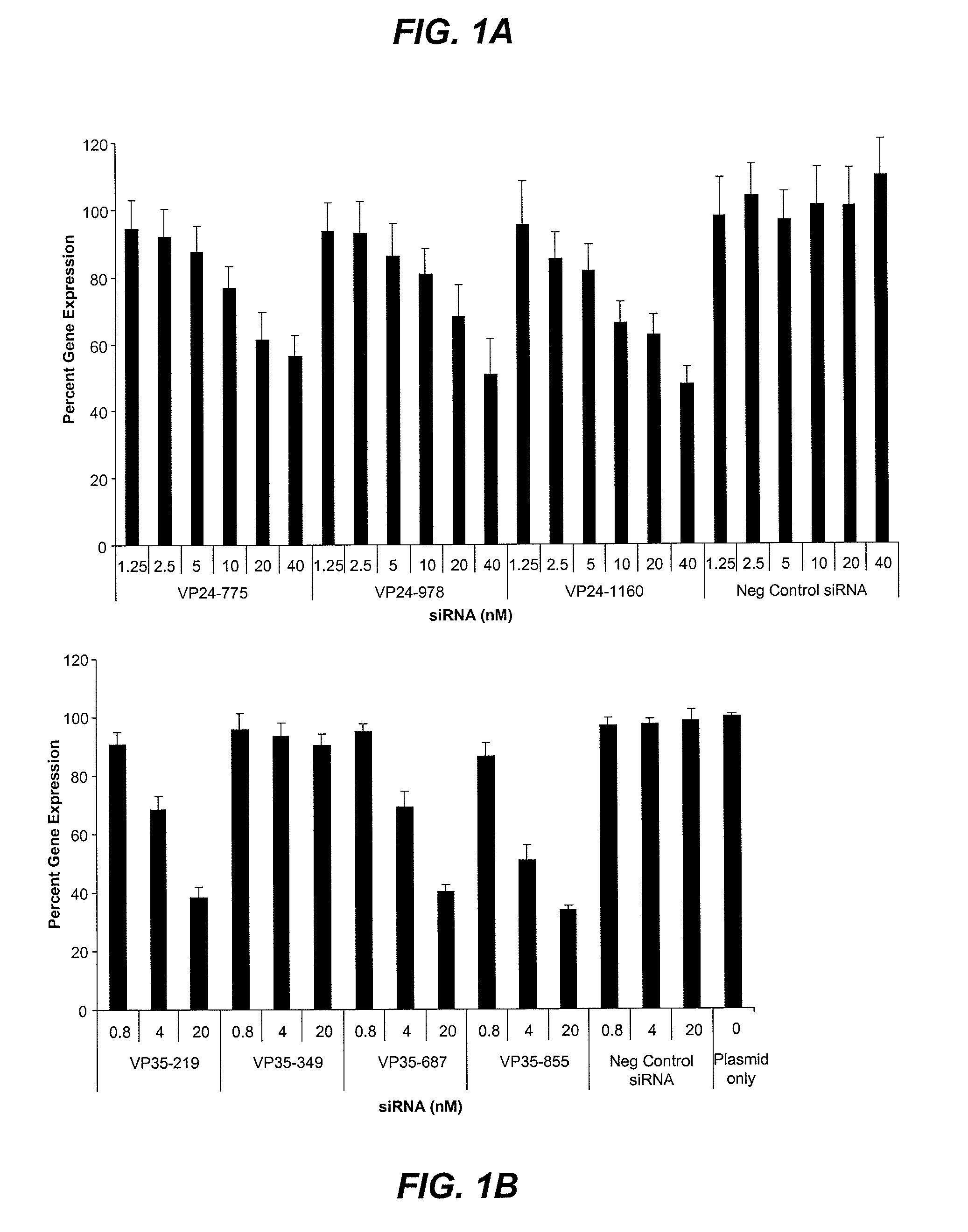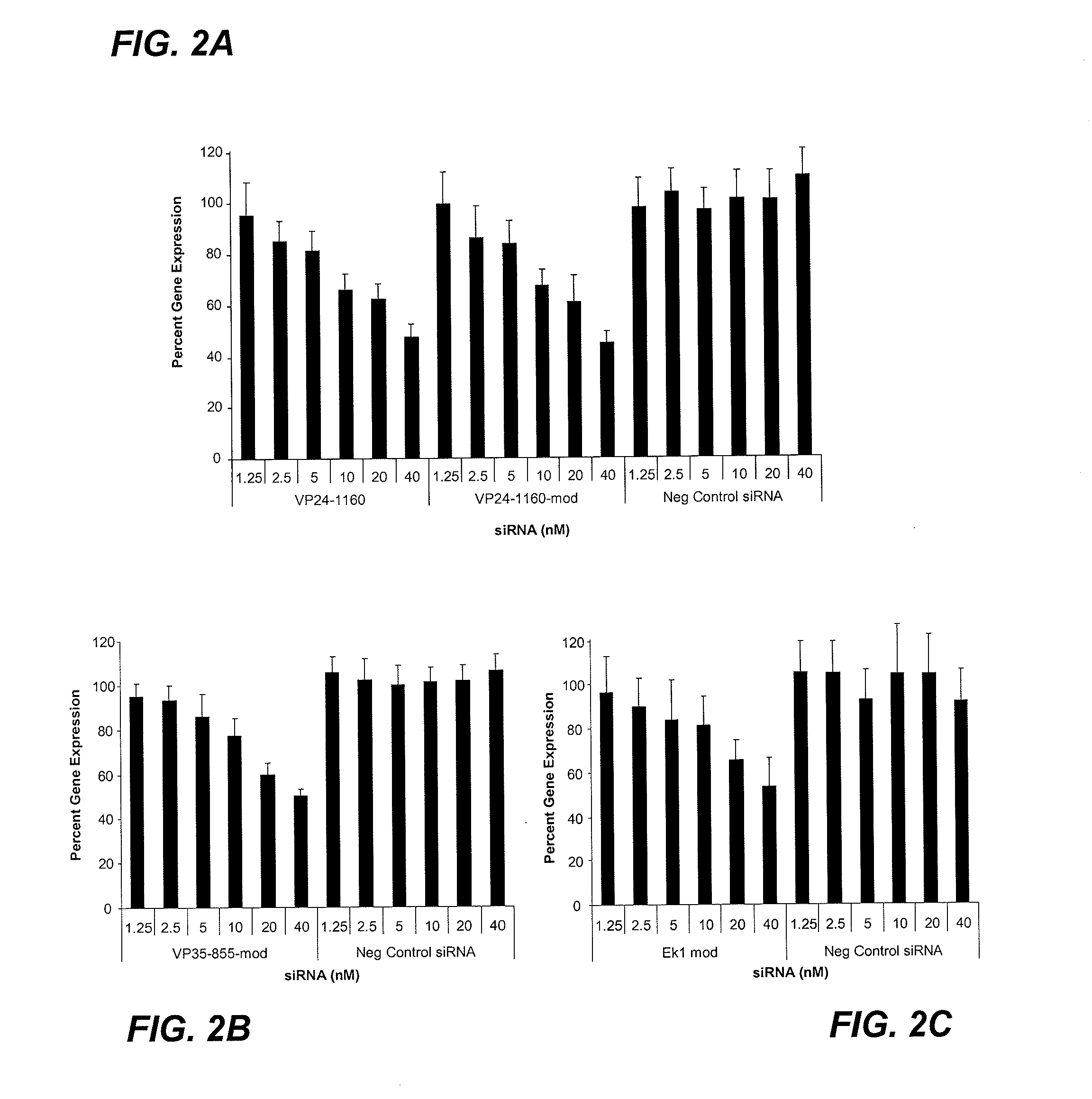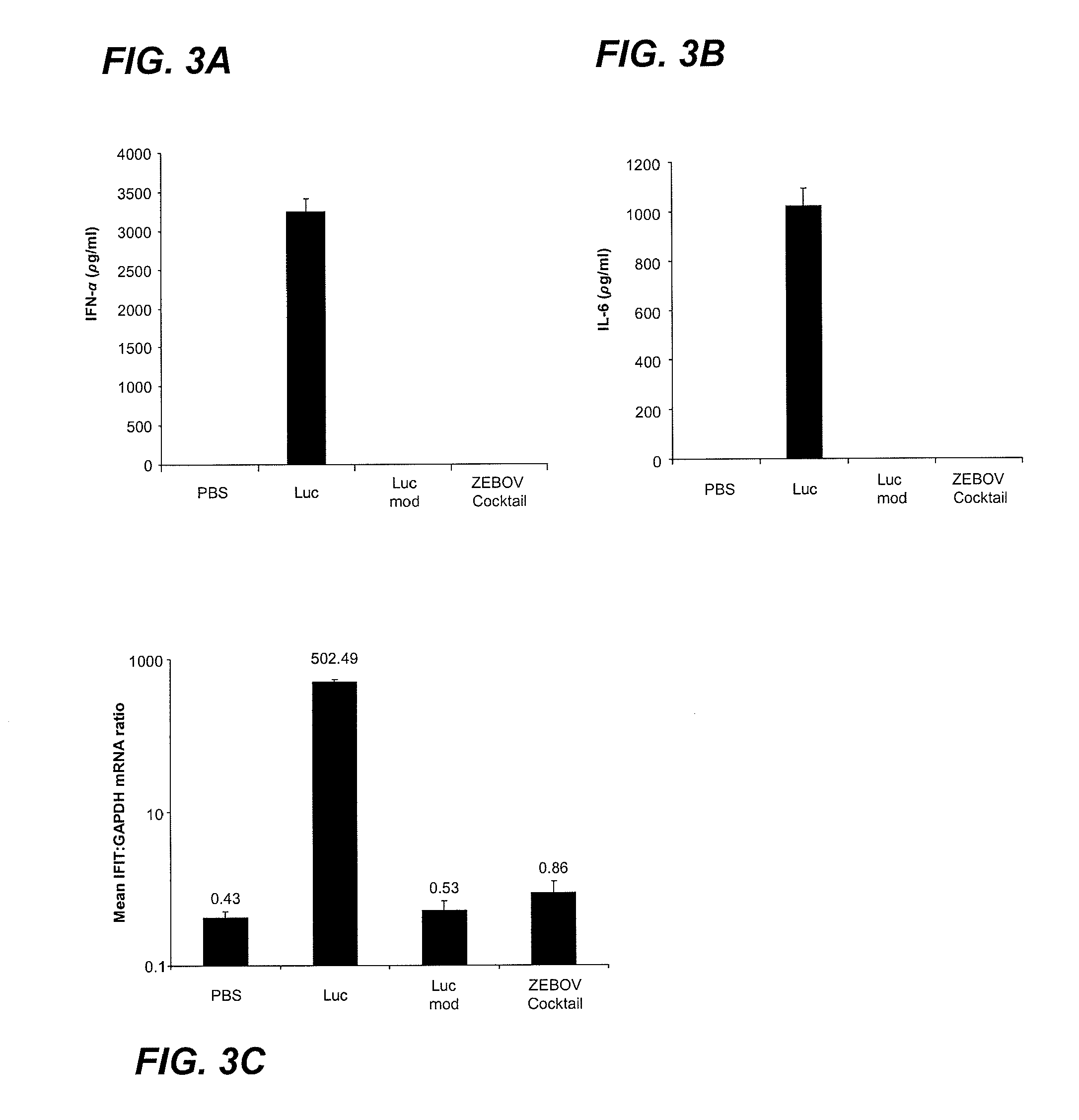Compositions and methods for silencing ebola virus gene expression
a technology of ebola virus and gene expression, applied in the field of compositions and methods for silencing ebola virus gene expression, can solve the problems of affecting the survival rate of ebola virus, and affecting the survival rate of ebola virus. , the effect of reducing the risk of ebola virus infection
- Summary
- Abstract
- Description
- Claims
- Application Information
AI Technical Summary
Benefits of technology
Problems solved by technology
Method used
Image
Examples
example 1
Postexposure Protection of Nonhuman Primates Against a Lethal Ebola Virus Challenge by RNA Interference
[0539]For more than 30 years, EBOV has been associated with periodic episodes of hemorrhagic fever in Central Africa that produce severe disease in infected patients. Mortality rates in outbreaks have ranged from 50% for the Sudan species of EBOV (SEBOV) to up to 90% for the Zaire species of EBOV (ZEBOV) (2). An outbreak late in 2007 caused by an apparently new species of EBOV in Uganda resulted in a fatality rate of about 25% (3).
[0540]EBOV particles contain an approximately 19-kb noninfectious RNA genome that encodes seven structural proteins and one nonstructural protein with the following gene order: 3′ leader, nucleoprotein (NP), virion protein (VP) 35 (VP35), VP40, glycoprotein (GP), VP30, VP24, polymerase L protein (L-pol), and 5′ trailer (4). Four of these proteins are associated with the viral genomic RNA in the ribonucleoprotein complex: NP, VP30, VP35, and L-pol. The L-p...
example 2
Characterization of Inflammatory Response to SNALP Formulations in Human Whole Blood
[0607]Inflammatory response to SNALPs containing one or more interfering RNAs (e.g., siRNAs) targeting one or more genes of interest such as one, two, or all three of the EBOV L-pol, VP24, and VP35 genes can be evaluated by measuring cytokine induction ex vivo in whole blood samples taken from human subjects. In certain instances, the SNALPs can contain either no siRNA payload (“empty”) or an siRNA payload comprising one or a pool of siRNAs. The siRNAs tested can include, e.g., any of the EBOV siRNA molecules described herein, whether alone or in combination (e.g., L-pol+VP35 siRNAs, L-pol+VP24 siRNAs, VP24+VP35 siRNAs, or L-pol+VP24+VP35 siRNAs). Briefly, fresh blood is isolated, immediately diluted 1:1 with 0.9% saline solution, and plated 0.45 mL / well into 48 well tissue culture treated plates. SNALPs are diluted in formulation PBS and added to the plated blood samples at a concentration of either...
example 3
In Vitro and In Vivo Activity Screen of Modified EBOV siRNAs in SNALP Formulations
[0609]EBOV L-pol siRNAs of the same nucleotide sequence were modified to incorporate an increasing number and alternate patterns of 2′OMe nucleotides. 307 different sense strands (S-1 to S-307) and 331 different antisense strands (AS-1 to AS-331) were designed (see, Tables 1-2). EBOV L-pol double-stranded siRNAs were generated by mix and match annealing of all possible combinations of sense strands and antisense strands. The number of modifications for double-stranded L-pol siRNAs ranged from 5 to 11 2′OMe nucleotides in the double-stranded region. In certain embodiments, the pattern of modification can include 2′OMe-modified nucleotides in the 3′ overhang of one or both strands of the siRNA, such that the number of modifications is further increased in the entire siRNA molecule. Table 11 shows exemplary modified double-stranded L-pol siRNAs that resulted from the mix and match annealing of sense stran...
PUM
| Property | Measurement | Unit |
|---|---|---|
| Fraction | aaaaa | aaaaa |
| Time | aaaaa | aaaaa |
| Time | aaaaa | aaaaa |
Abstract
Description
Claims
Application Information
 Login to View More
Login to View More - R&D
- Intellectual Property
- Life Sciences
- Materials
- Tech Scout
- Unparalleled Data Quality
- Higher Quality Content
- 60% Fewer Hallucinations
Browse by: Latest US Patents, China's latest patents, Technical Efficacy Thesaurus, Application Domain, Technology Topic, Popular Technical Reports.
© 2025 PatSnap. All rights reserved.Legal|Privacy policy|Modern Slavery Act Transparency Statement|Sitemap|About US| Contact US: help@patsnap.com



